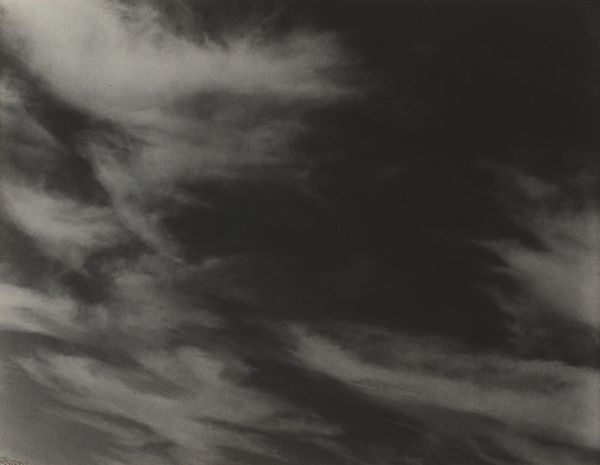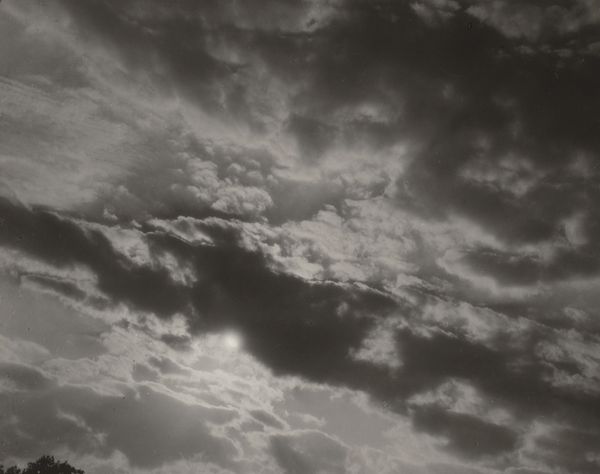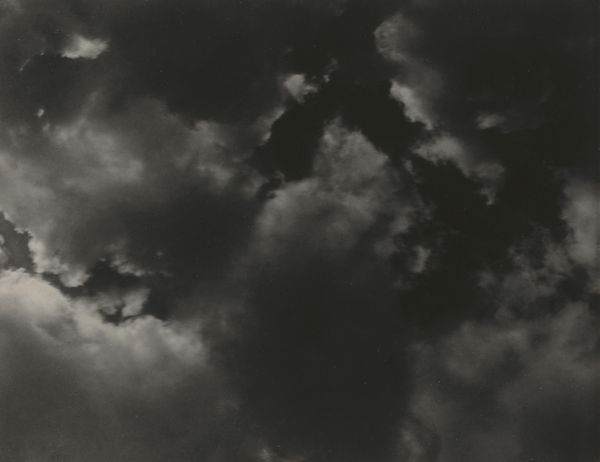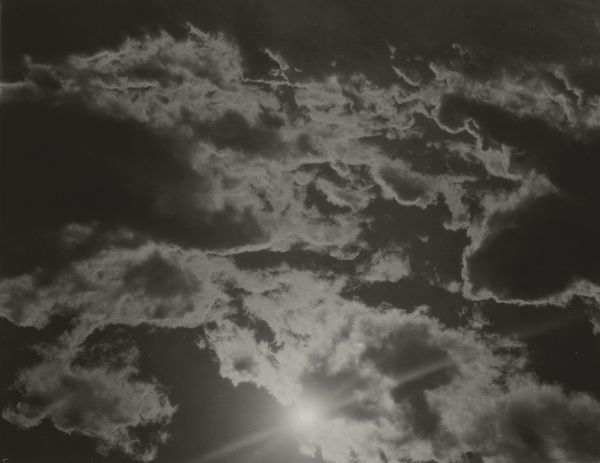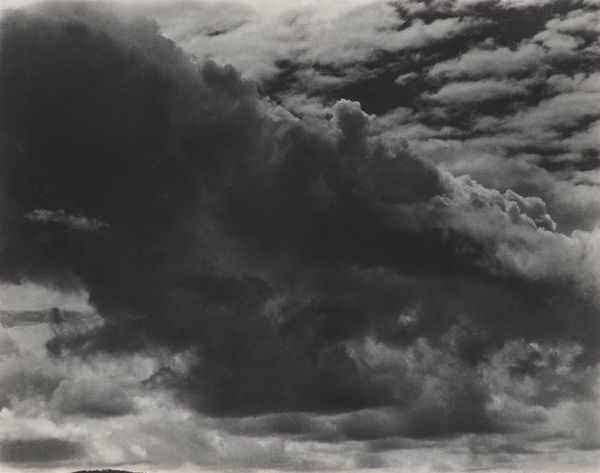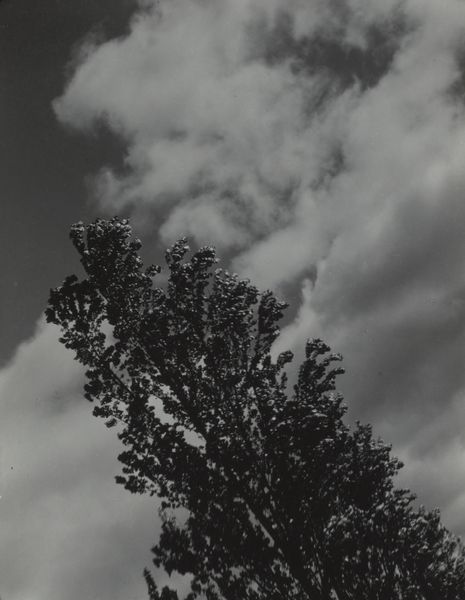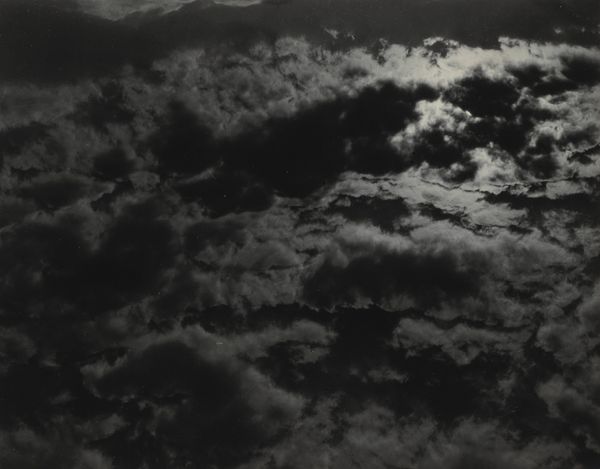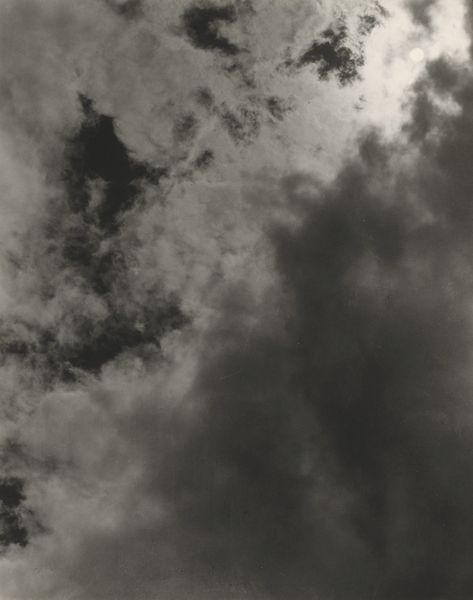
#
cloudy
#
black and white photography
#
snowscape
#
black and white format
#
monochrome colours
#
warm monochrome
#
black and white
#
monochrome photography
#
monochrome
#
shadow overcast
Dimensions: sheet (trimmed to image): 9.1 x 11.6 cm (3 9/16 x 4 9/16 in.) mount: 35.2 x 27.3 cm (13 7/8 x 10 3/4 in.)
Copyright: National Gallery of Art: CC0 1.0
Editor: Here we have Alfred Stieglitz's photograph, "Bird," taken in 1922. It’s a black and white image, dominated by a sky full of clouds with a bird perched on a wire. There's something both hopeful and isolating about it. How do you interpret this work? Curator: It’s fascinating how Stieglitz captures the weight of modernity through the simple image of a bird on a wire. Wires, after all, are potent symbols of connection, but also restriction. Consider how the bird, seemingly free against an expansive sky, is literally grounded by human construction. Does it speak to the illusion of freedom within societal structures? Editor: That's interesting. I hadn't thought of the wire as a restriction. The clouds seemed more dominant to me, like a symbol of limitless possibility, overshadowing the industrial wire. Curator: But do those clouds promise freedom or suggest a looming storm? Consider how frequently birds appear in mythology and folklore. Often, they're messengers, or even stand-ins for the soul. Is this solitary bird bringing a message or simply observing? What might the message be? Editor: Perhaps the message is about finding freedom, or maybe peace, within the framework we’re given, however limiting it seems. Like choosing to rest, however briefly, on the wire. Curator: Precisely. Stieglitz, whether intentionally or not, taps into our collective unconscious understanding of these symbols. The photograph becomes less about the image itself and more about the cultural memory it evokes, sparking introspective contemplation. Editor: It’s amazing how a seemingly simple image can hold so much meaning once you start unpacking the symbols and thinking about cultural memory. Curator: Indeed, and it reinforces how art invites us to reconsider the everyday, prompting a deeper examination of our place within the larger human story.
Comments
No comments
Be the first to comment and join the conversation on the ultimate creative platform.

